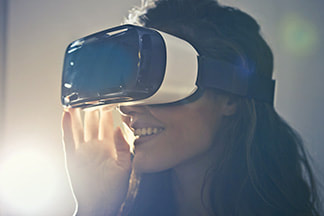|
WHAT EXACTLY IS TECHNOLOGY ANYWAY? Examples of technology throughout the history of education include wooden paddles with printed lessons during the Colonial years; the Magic Lantern, an archaic form of a slide projector; and the chalkboard (which arrived around 1890), followed by the pencil (in 1900). Audio in the form of radio started in the 1920s; the overhead projector was introduced in 1930, the ballpoint pen in 1940, and headphones in 1950. Videotapes were first used during the early 1950s, and Skinner’s all-inclusive teaching machine came thereafter. Skinner's teaching machine had Popular Mechanics asking if "robots will teach your children" ... in 1961. The late 1950s and early 1970s produced the photocopier and handheld calculator, and Sokolski’s Scantron system began scoring assessments in 1972. Everyday use computers arrived in the 1980s, the Internet was born in the early 1990s, and Apple released the first personal digital assistants (PDAs) in 1993. In a word, technology has incrementally crept into classrooms over the years as a means to have a positive impact on student achievement and relieve teachers of repetitious work (Cuban, 1986; Martin, 2016; Purdue University, n.d.).  TECHNOLOGY AND THE WORKPLACE Technology has changed the thinking of teachers as they must now consider how technology impacts transdisciplinary outcomes such as the 21st-century skill, collaboration. Due to technology, the context of collaborating has dramatically changed as technology allows collaboration to take place anywhere, anytime. Ubiquitous collaboration allows for the sharing of projects and increases productivity on a global scale and employers are actively seeking candidates with this workplace competency (Manpower Group, 2015).  How should students engage with educational technologies and for what purposes? (McLeod & Graber, 2019) How should students engage with educational technologies and for what purposes? (McLeod & Graber, 2019) THE BOTTOM LINE As technology is ever changing, so will the knowledge and skills needed to be a successful collaborator, critical thinker, creator, and communicator (McGivney & Winthrop, 2016). In summary, technology is not an ends to a means nor should it be viewed as a standalone. The appropriate use of technology can be an avenue to 21st-century learning and be used to enhance learning and increase student achievement (McTighe & Curtis, 2016). As technology continues to transform the workplace we need to ensure students are complemented by technology instead of being replaced by it (Brynjolfsson & McAfee, 2014). Teachers must instill the digital literacy knowledge, skills, and outcomes needed to leverage the available technologies for student and future employee success (Martin, 2016). Be sure to join the Pedagogize It community if you enjoyed this quick lesson in ed tech history. We will be looking at strategies for how to best use technology for learning in future posts and you will not want to miss out. Below are the resources mentioned from this post if you want to learn more about the history of ed tech and ideas for successful integration. In the meantime, leave your thoughts in the comments about how technology has or has not changed teaching and learning in your opinion throughout the history of education.
0 Comments
Your comment will be posted after it is approved.
Leave a Reply. |
 RSS Feed
RSS Feed